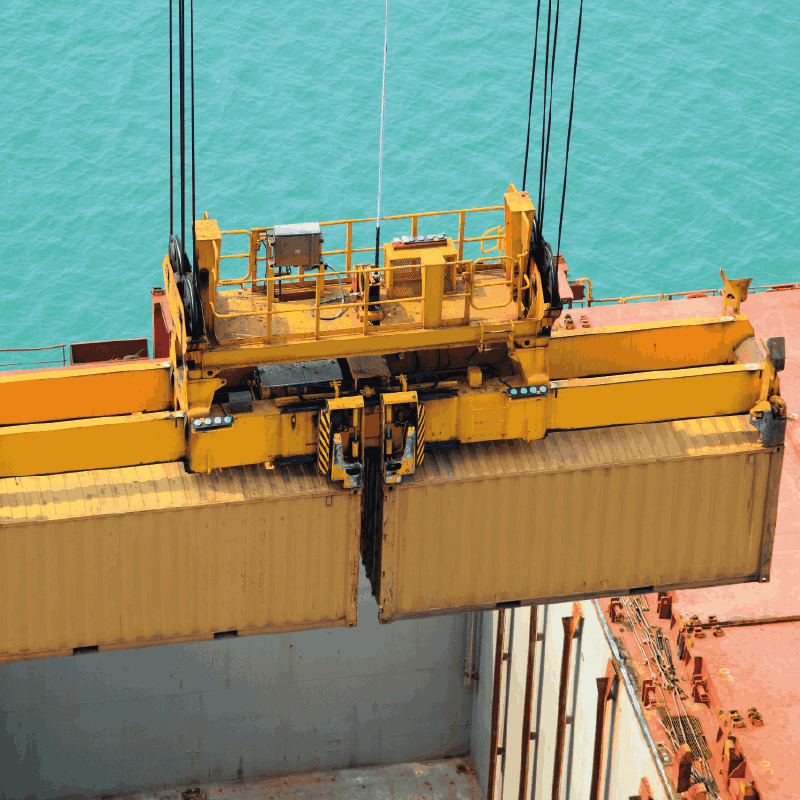Products | Trailer Management
SafeTruck Trailer Management is a technology used in logistics and transportation that provides real-time tracking and management of trailers. The system utilizes advanced sensors and software to collect and transmit data on the location, status, and performance of trailers, allowing fleet managers to optimize their usage, reduce downtime, and increase efficiency. Additionally, the system enables proactive maintenance, enhances safety and security, and provides valuable data insights for business decision-making.

TRAILER UTILIZATION
Increase Trailer Utilization
Our product can track the location and availability of trailers, as the trailer management can help users better utilize trailers and reduce trailer idle time.
Cargo Monitoring
Protect Temperature-Sensitive Loads
Real-Time Trailer Tracking
ENHANCED SECURITY
Real-Time Security and Efficiency
SafeTruck Trailer Management can track last location and status of trailers. Help our users prevent theft and improve the security of their trailers and cargo.
Improved Security
Increased Efficiency

MAINTENANCE TRACKING
Save Money on Maintenance
Our trailer management can track maintenance needs and schedules for trailers, helping users stay on top of repairs and reduce risks of breakdowns
Track Maintenance Log
Load Optimization
Tire Maintenance Log
RFID INTEGRATION
Visibility of Trailer Dispatched
Our technology can track the movement of trailers in and out of distribution, ensuring that trailers are being utilized efficiently.
Automatic Identification and Tracking
Reduce Error in Tracking and Inventory Management

How does RFID Asset Tracking Work?
Businesses face a critical challenge in streamlining asset management, where time spent searching for equipment can result in costly delays and inefficient resource allocation. Utilizing radio frequency identification (RFID) technology provides an efficient solution, automatically tracking assets through electromagnetic fields and enabling real-time, accurate tracking for both fixed and mobile assets.
Exploring RFID Tags : Active vs Passive
RFID tags are categorized as active or passive, and the choice between them depends on specific objectives and required capabilities
Understanding Passive RFID Tags
Passive RFID tags belong to the broader category of radio frequency identification tags and offer a cost-effective option compared to active tags. While they are smaller and less expensive, their read ranges are relatively shorter.
The Mechanism of Passive RFID Tags
Passive RFID tags operate without internal power and rely on radio frequency energy from RFID readers/antennas for activation. When the reader and antenna emit a signal, it powers the tag, enabling it to reflect the energy back to the reader.
Applications of Passive RFID Tags
Passive RFID tags offer versatility and cost-effectiveness, making them suitable for a broader array of objects compared to active tags. UHF (ultra-high frequency) passive tags find common use in item-level tracking for pharmaceuticals and consumer goods.
Active RFID Tags : An overview
Active RFID tags, larger and pricier than passive ones, offer extended read ranges up to 100m. They fall into two main categories of radio frequency identification tags: beacons, emitting signals regularly, and transponders, conserving battery life by activating upon receiving signals from RFID readers.
Applications of Active RFID Tags
Active RFID tags find extensive use in various applications due to their capability to support sensors that measure and transmit conditions such as temperature, light, and humidity. Their popularity lies in their suitability for harsh environments, and they are commonly employed for tracking larger assets like vehicles and cargo containers.
Streamlining Asset Tracking with RFID
By incorporating portable RFID readers into mobile computers, staff can easily scan asset tags without direct visibility, enabling efficient inventory processes. RFID tags with larger memory capacity store additional asset information, facilitating maintenance activities and sensor data storage, even in remote areas. Advantages of RFID asset tracking over barcoding include simultaneous reading of multiple tags, integration with sensors and GPS technology for asset condition data, and enhanced security with real-time alerts. RFID reduces tracking times, increases productivity, and streamlines asset management for cost-effectiveness.

Frequently Asked Questions
What features should I look for in a trailer management?
Some key features to look for in a trailer management include real-time location tracking and alerts, cargo monitoring and temperature control, maintenance scheduling and tracking, load optimization, and detailed reporting and analytics.
How much does a trailer management system cost?
The cost of a trailer management can vary depending on the features and capabilities of the system, as well as the size and needs of the organization using it. Some systems may charge a monthly or annual subscription fee, while others may offer a one-time purchase price.
What are the benefits of using a trailer management system?
Using a trailer management can help businesses improve security and reduce the risk of theft, increase efficiency and utilization, reduce trailer idle time, and proactively manage maintenance needs to prevent breakdowns and downtime.
What are the benefits of using Active RFID with GPS?
Enhanced asset tracking accuracy, real-time monitoring, improved security, and increased efficiency in managing assets and inventory.
What is Active RFID with GPS?
A tracking system combining active RFID technology and GPS for real-time monitoring of assets transmitting signals and GPS coordinates to a central system.
How accurate is the location data provided by Active RFID with GPS?
It offers highly accurate location data through a combination of RFID and GPS, enabling real-time tracking for precise asset monitoring.
Is it possible to integrate Active RFID with GPS into existing systems?
Active RFID with GPS can be integrated with existing systems, providing seamless data transfer and improving asset tracking and management efficiency.
How can implementing Active RFID with GPS result in potential cost savings?
Implementing Active RFID with GPS can lead to significant cost savings by optimizing asset utilization, reducing theft and loss, minimizing downtime, and streamlining inventory management.









